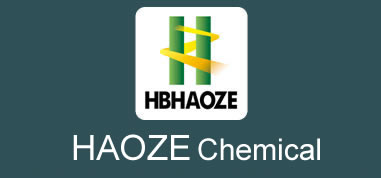Applications of Styrene Acrylic Emulsion: Diverse Uses
Styrene-acrylic emulsion polymers are synthesized through the emulsion polymerization of styrene and various acrylic monomers.
The combination results in a polymer with excellent hydrophobic properties, enhanced mechanical strength, and high glass transition temperature. These characteristics make styrene-acrylic emulsions ideal for applications requiring moisture resistance, durability, and adhesion to various substrates. The emulsion structure allows for smaller particle sizes, which improves film formation and surface smoothness. As a result, styrene-acrylic emulsions are widely used in coatings, adhesives, sealants, and elastomers (CASE) applications.
Styrene-acrylic polymers offer a cost-effective solution with superior water resistance, good weatherability, and the ability to crosslink for enhanced film strength. Their versatility allows for use in a broad range of applications, including construction primers, paper coatings, and architectural finishes.
Below are some key applications of styrene acrylic emulsion:
1. Paints and Coatings
One of the most common uses of styrene acrylic emulsion is in paints and coatings. The emulsion’s ability to combine good flow, flexibility, and adhesion makes it ideal for use in both interior and exterior coatings.
Architectural Coatings: Styrene acrylic emulsions are used in house paints, particularly in emulsions for walls and ceilings. They offer excellent coverage, durability, and resistance to weathering, which is crucial for exterior applications where the paint is exposed to the elements.
Industrial Coatings: These emulsions are also used in industrial coatings, including those for metal, wood, and plastic surfaces. The emulsion provides resistance to chemicals, scratches, and impacts, making it suitable for manufacturing plants, warehouses, and equipment coatings.
Textured Coatings: Thanks to its good flexibility and adhesion properties, styrene acrylic emulsion is commonly used in textured coatings like stucco or spray-applied wall finishes. These coatings benefit from the emulsion’s ability to provide a smooth application while ensuring the coating remains durable and resistant to cracking.
2. Adhesives
Styrene acrylic emulsion is widely used in the formulation of water-based adhesives. Its combination of flexibility, strong bonding properties, and environmental safety makes it an excellent choice for a range of adhesive applications.
Paper and Packaging: Styrene acrylic emulsion adhesives are frequently used in the paper and packaging industries for applications like corrugated board bonding, labels, and carton sealing. The emulsion’s high adhesion ensures strong bonds between substrates while maintaining flexibility.
Woodworking: In the furniture industry, styrene acrylic-based adhesives are used for bonding wood veneers and laminates. These adhesives provide excellent bond strength and durability, ensuring that the finished products are long-lasting and resistant to wear and tear.
3. Textile and Fabric Coatings
In the textile industry, styrene acrylic emulsion is utilized to enhance fabric performance by providing coatings that offer strength, flexibility, and water resistance. It is often used to finish fabrics, especially in applications where durability and flexibility are essential.
Textile Coatings: Styrene acrylic emulsion provides excellent adhesion to fabrics and ensures that the coatings remain flexible, which is crucial for applications like outdoor gear or automotive upholstery.
Fabric Softening: The emulsion is also used in fabric softeners and treatments to maintain the softness and flexibility of fabrics without compromising their strength or durability.
4. Construction and Concrete
In the construction industry, styrene acrylic emulsion is used as a bonding agent and modifier in cementitious products such as plaster, mortar, and concrete. It enhances the durability and flexibility of these materials, making them more resilient to weathering and cracking.
Concrete Bonding: Styrene acrylic emulsions improve the adhesion between fresh concrete and old concrete surfaces. They also enhance the water resistance and flexibility of the concrete mix, making it more durable in harsh environments.
Waterproofing: Styrene acrylic emulsions are used in waterproof coatings and membranes to protect buildings from moisture and water infiltration. These coatings are commonly applied to foundations, roofs, and external walls, offering enhanced resistance to water damage.
5. Flooring Applications
Styrene acrylic emulsion is used in the production of flooring adhesives and finishes. Its flexibility and strong adhesion properties ensure that it can bond different types of flooring materials, such as vinyl, tiles, and carpets, securely to subfloors.
Vinyl Flooring: Styrene acrylic-based adhesives are commonly used in vinyl flooring applications because they provide a secure bond that resists lifting and cracking under foot traffic.
6. Graphic Arts and Printing
In the graphic arts industry, styrene acrylic emulsion is utilized as a binder in ink formulations and printing coatings. It helps to improve ink adhesion to substrates such as paper and plastics, providing smoother finishes and better durability.
Printing Inks: Styrene acrylic emulsions are used to formulate printing inks for flexographic and gravure printing. The emulsion helps to enhance ink performance, improving its ability to dry quickly and adhere to a variety of materials.
Coatings for Labels and Stickers: The emulsion is also used in the production of coatings for labels, stickers, and other printed materials to provide scratch resistance, smoothness, and color retention.
Conclusion
Styrene acrylic emulsion is a highly versatile product with numerous applications in various industries. Its combination of good adhesion, flexibility, durability, and cost-effectiveness makes it an ideal choice for paints, coatings, adhesives, textiles, construction, and more. Whether used in home improvement projects, industrial manufacturing, or commercial applications, styrene acrylic emulsion proves to be a reliable and effective solution for a wide array of needs.
Last:The Differences Between Pure Acrylic and Styrene Acrylic
Next:最后一页









 Home
Home product
product Tel
Tel Menu
Menu